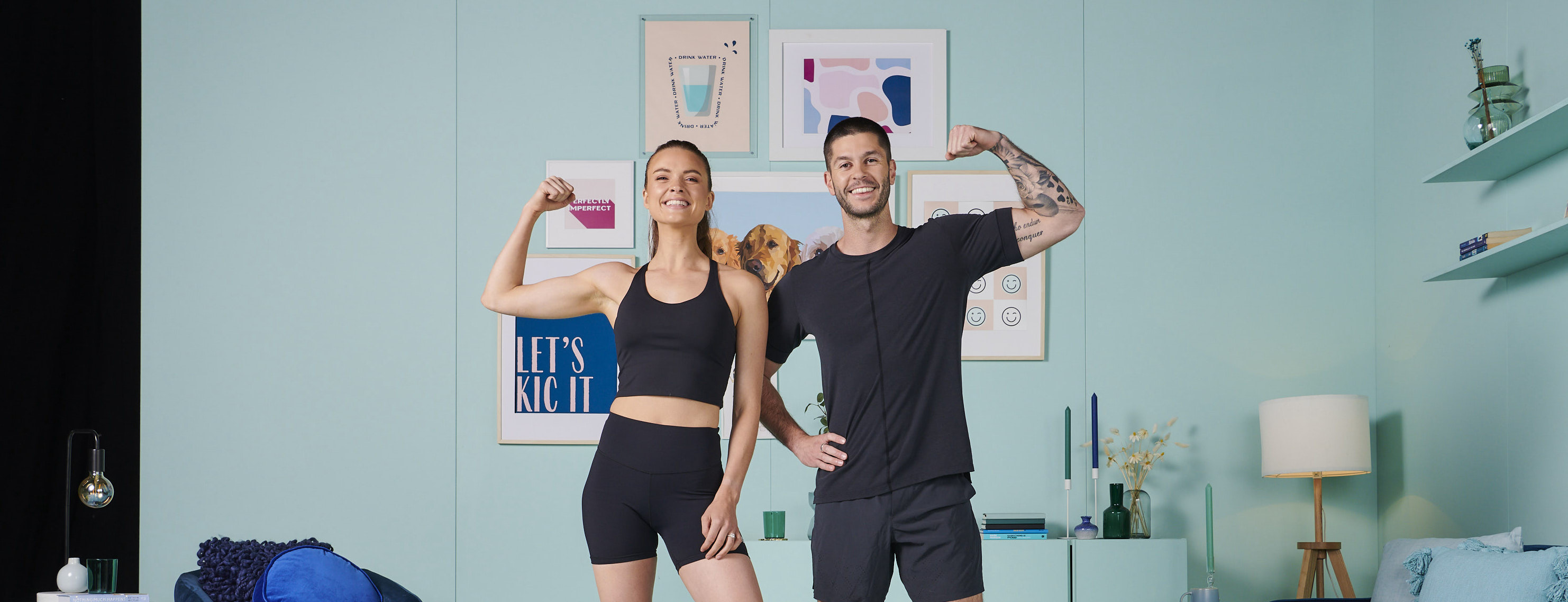What is Progressive Overload? A deep dive into the benefits of lifting heavy with Head Trainer Danny
Want to get stronger, see improvements and grow your confidence in your workouts? Progressive overload is key!
At KIC we’re all about making improvements, no matter how big or small, it’s about progress, not perfection. In order to make progress, you should look to progressively overload your KIC workouts. Doing this will both challenge and strengthen your body.
We chatted with Danny to get all the details on what progressive overload actually is and how we can implement it at home and in the gym to reap its rewards!
When it comes to moving our bodies, seeing progress and getting stronger, what are the most important things we need to focus on?
There are a few key elements that need to be ticked off when it comes to giving yourself the best chance of improving your health.
Nutrition.
Aim to fuel your body with nutrient dense foods that will allow you to perform, recover and feel your best. Think of your body like a sports car, if it’s not provided with quality fuel, it won’t run efficiently.
Progressive overload with your training.
Over time, the goal should always be to make improvements where possible, no matter how big or small those improvements may be. A few examples: If you usually use a 10kg KB for goblet squats in a KIC strength session, once that becomes comfortable you must increase the difficulty by either increasing the weight, adding more resistance such as a glute band or slowing down the tempo to make it harder. If you typically run 3km in a certain time, the goal should be to improve on that time as your body will adapt quite quickly. Even something as simple as your mobility or flexibility, this is something that should be of priority and improved over time to allow for improved performance and reduced risk of injury.
Recovery.
Far too many of us think that the more we do, the better the results will be. Rest is essential for progress, and should be scheduled into your training week. Give your body and mind a chance to recover with rest days (passive or active), quality sleep, hydration, deep tissue massage when necessary and taking care of your mental health with tools such as meditation and journalling etc.
You mentioned progressive overload - what does that mean?
Progressive overload simply means that you are providing more of a stimulus to the body over time. Our bodies adapt quite quickly, change requires some form of stress on the body, this can come in the way of more reps, more weight, added resistance, shorter rest, higher intensity etc. Remember, small progress is still progress.
Why do we want to progressively overload? What are the benefits?
As mentioned above, the body will adapt quite quickly to any stimulus it’s provided with, both physically and mentally, by progressively overloading we then force our body and mind to adjust to the increased difficulty, which is essential for progress over time, not to mention the benefits of working on your self-discipline muscle.
Now that we understand the benefits of progressive overload, how can we actually implement it?
Progressive overload can come in the way of more weight, more reps, more sets, shortened rest periods, adding difficulty with things such as bands/tempo/intensity techniques etc. Any increase in difficulty is classified as overload, so going from a weight of 8kg to 8.5kg is still progress. It’s not a race, but by challenging yourself as often as possible you will be giving yourself the best chance of improvement and change, something we should all be striving for
What are your best tips for progressively loading our KIC workouts at home?
At home, the best ways to overload may come in the way of increased weight (if you have the equipment available), shortened rest periods, increasing reps and intensity (example: if you usually get 8 reps of burpees in a 20 second effort, start aiming to get 9), or slowing down the eccentric phase of a rep (when the muscles are lengthening, such as the way down on a squat).
What are your best tips for progressively loading our KIC workouts at the gym?
At the gym, you will have access to more weight, typically the easiest way to overload as long as your exercise execution is perfect. Quality should always come before quantity. Another way we can overload in a gym setting may be by trying new pieces of equipment to perform the same exercises, example: a barbell squat instead of a DB goblet or body weight squat, or adding resistance to a hip thrust by using a DB, weight plate or barbell.
You might also like
- Blog
- FITNESS
We have a vast range of workouts, some which require equipment and others which don’t. So, if you’re looking to purchase some equipment, here’s what we recommend having.

- Blog
- FITNESS
HIIT and Strength workouts are two powerhouse workout styles that get us moving and help us release endorphins. It’s important to understand how these styles uniquely benefit our bodies, ready? Let’s find out!

- Blog
- FITNESS
There’s nothing more frustrating than working hard in your strength session and not getting the optimal results. Our trainer Danny is sharing his top tips to “Turn On” your glutes when you train so you can be sure you’re feeling the burn.


